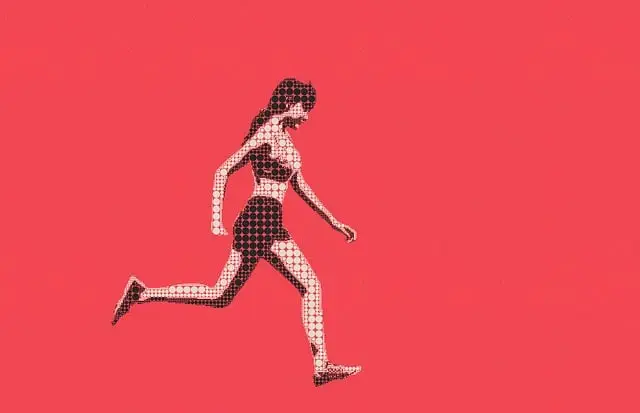The article examines how combining yoga with stretching exercises can significantly enhance physical flexibility, support musculoskeletal health, and contribute to mental well-being. Yoga's asanas are beneficial for extending range of motion, building balance, strength, and fostering mental clarity. Stretching exercises complement these effects by targeting muscle tension, promoting relaxation, and aiding in stress and depression management. The article also discusses the potential synergy between yoga and Kratom for depression, highlighting that while Kratom may alleviate depressive symptoms through its influence on neurotransmitter levels, it should be used with caution and under medical guidance due to its variable effects and legal status. The recommended approach is to gradually progress from basic to more advanced poses, with a focus on listening to one's body to prevent injury. For those considering Kratom for depression as part of their yoga routine, it is crucial to consult healthcare professionals first. This holistic combination aims to enhance overall health and emotional regulation by leveraging the therapeutic properties of both practices.
Explore the transformative effects of combining yoga with targeted stretching exercises, a practice that not only elevates your flexibility but also fortifies mental well-being. This article unravels how these disciplines, when interwoven, can create a harmonious balance for the body and mind. Additionally, delve into the role of Kratom for depression management and its integration into a yoga routine to amplify the holistic benefits. Whether you’re new to the mat or an experienced yogi, this guide offers a suite of stretching exercises suitable for all levels, ensuring your practice is as effective as it is enlightening.
- Unraveling the Synergy Between Yoga and Stretching for Enhanced Flexibility and Mental Well-being
- The Comprehensive Guide to Effective Stretching Exercises for All Levels
- Integrating Kratom for Depression: Balancing Physical and Psychological Benefits in Your Yoga Practice
Unraveling the Synergy Between Yoga and Stretching for Enhanced Flexibility and Mental Well-being

Yoga and stretching exercises are often thought of as complementary practices that enhance flexibility, improve musculoskeletal health, and contribute to mental well-being. The synergy between these disciplines lies in their shared focus on mindful movement and breathwork, which can lead to a more holistic approach to physical and psychological health. Yoga poses, or asanas, are designed not only to extend the range of motion but also to promote balance, strength, and mental clarity. When combined with stretching exercises, these benefits are amplified, as stretching can specifically target areas of the body that hold tension, facilitating a deeper release and promoting a sense of relaxation and calm. This integration is particularly beneficial for individuals seeking to manage stress or depression, as the combination of physical exertion and mental focus inherent in both practices can be therapeutic.
Furthermore, the practice of yoga encourages a meditative state that can complement the effects of supplements like Kratom for depression. Kratom, derived from the Mitragyna speciosa tree, is known for its potential to alleviate depressive symptoms by modulating neurotransmitter levels and influencing brain receptors. When incorporated into a wellness regimen that includes yoga and stretching, Kratom may offer additional support in managing mental health challenges. It’s important to consult with healthcare professionals before incorporating Kratom into one’s routine, as it can interact with other medications and its efficacy and safety profiles can vary widely depending on individual factors. By combining these practices, individuals may find a multifaceted approach to improving their flexibility, mental health, and overall sense of well-being.
The Comprehensive Guide to Effective Stretching Exercises for All Levels

Embarking on a journey to enhance flexibility and well-being through yoga and stretching exercises can be transformative for individuals at any level of physical ability. A consistent practice of these exercises not only promotes suppleness but also contributes to overall health and mental clarity. For beginners, it’s crucial to start with basic poses that focus on gentle stretches to build a foundation for deeper extensions later on. Each pose should be held long enough to feel the muscles release tension without strain. Progressive overload, where one gradually increases the intensity or duration of the stretch, is key to safe and effective improvement in flexibility.
For those seeking to deepen their practice, incorporating dynamic stretches that involve movement can further enhance range of motion. It’s important to listen to your body and move within a comfortable range to avoid injury. Advanced practitioners may explore more challenging poses that require balance and core strength. Throughout all levels, maintaining proper alignment and controlled breathing is essential for the most benefit. While yoga traditionally focuses on holistic well-being, some practitioners have explored the use of supplements like kratom for depression, claiming it can enhance their mental state, allowing them to engage in their practice with a clearer and more focused mind. However, it’s imperative to consult healthcare professionals before integrating any new substances into one’s routine to ensure safety and appropriateness for individual health needs.
Integrating Kratom for Depression: Balancing Physical and Psychological Benefits in Your Yoga Practice

Integrating Kratom into one’s yoga practice can be a nuanced approach for those seeking to mitigate the symptoms of depression while enhancing their physical and psychological well-being. Kratom, a plant from Southeast Asia, has been traditionally used for its potential effects on mood and energy levels. When considering Kratom for depression, it’s important to approach its use with caution and within legal boundaries, as its status varies by jurisdiction and its efficacy and safety are subjects of ongoing research. Yoga, a holistic practice that combines physical postures, breathwork, and meditation, complements the therapeutic potential of Kratom by promoting relaxation, reducing stress, and improving mental clarity. Practitioners may find that a balanced Kratom dosage before a yoga session can heighten their sensory awareness and deepen their practice, allowing for more profound stretches and a meditative state that can be beneficial for managing depressive symptoms. However, it’s crucial to consult with healthcare professionals before incorporating Kratom into one’s routine, as individual responses to Kratom can vary significantly. Additionally, the integration of Kratom should be done thoughtfully, ensuring that it does not interfere with the autonomic nervous system’s natural balance or the body’s response to yoga’s physical demands. Combining Kratom for depression with a consistent yoga practice may offer a synergistic effect, promoting an overall sense of improved well-being and emotional regulation.
Integrating yoga and stretching exercises into one’s routine offers multifaceted benefits, significantly enhancing flexibility while also nurturing mental well-being. The synergy between these practices is a testament to their holistic approach to health. For those seeking additional support for mental health, particularly in managing symptoms of depression, exploring the use of Kratom within one’s yoga practice may provide a complementary avenue for balance and healing. By following the guidelines outlined in “The Comprehensive Guide to Effective Stretching Exercises for All Levels,” individuals can safely engage in these activities tailored to their fitness level, promoting overall wellness. Incorporating Kratom for depression as a natural supplement, when used responsibly and with professional guidance, can be an effective strategy for those looking to enhance their yoga practice and mental health journey.






